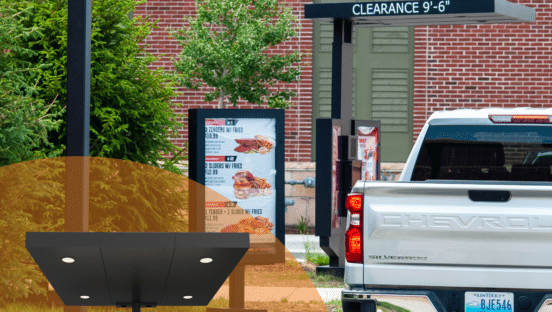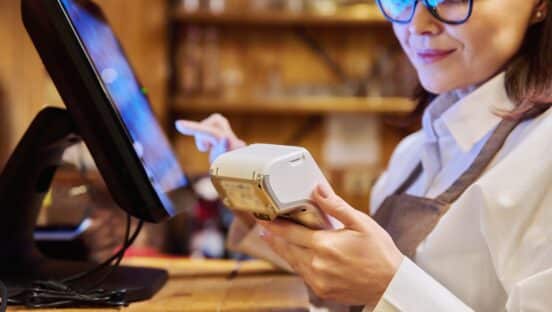Many Americans and business owners are experiencing inflation due to the pandemic and other external factors. The unpredictability of the cost of goods has driven a series of menu changes across the restaurant industry, forcing brands to consider the hardware that has traditionally displayed pricing.
One effective solution for these challenges is implementing hybrid menuboards. This type of board combines digital and static displays, offering more customizable options for managing content across multiple locations.
Hybrid menuboards provide many advantages for restaurant owners during times of uncertainty. First, they offer the flexibility to quickly change even the most minor of details on a menuboard Secondly, for those brands managing multiple locations, content management systems can simultaneously update multiple digital menuboards at once without any additional labor costs. For example, if a product price increases due to inflation or a seasonal special-needs promotion, digital portions of the board can be changed quickly and easily.
Additionally, hybrid menuboards provide an aesthetically pleasing display that attracts customers while allowing new items or specials to be added without taking up additional space. Restaurant owners also control how they display their products and services when using hybrid menuboards.
Digital components can include custom visuals such as videos or graphics and text descriptions to highlight features or benefits of certain menu items. By having more control over how items are presented on their boards, restaurants can ensure that their menus accurately reflect their brand identity while drawing attention to various offerings. They also allow restaurant owners to create different designs for each location to have a unique look that resonates with customers in each area.
The transition to hybrid menuboards may seem intimidating to some operators, especially those who worry about durability and weather compatibility. However, partnering with the right provider can equate to weather-tempered options as reliable as traditional, static menuboards.
Equipped with LED screens engineered to withstand extreme temperatures, these monitors can operate 24 hours a day, seven days a week without concerns of damage or malfunctions—even in the harshest conditions. This helps reduce maintenance costs and largely eliminates the need for costly repairs originating from extreme environmental exposure.
Hybrid menuboards are effective tools for restaurant owners as they work through periods of inflation by providing flexible and customizable solutions for updating prices and displays across multiple locations quickly and easily. As more restaurants turn toward technology-driven solutions, it’s clear that hybrid systems will play a bigger role in the industry moving forward so that businesses not only remain competitive, but also endure the financial challenges posed by unpredictable external causes.
To learn more, visit dsasignage.com














